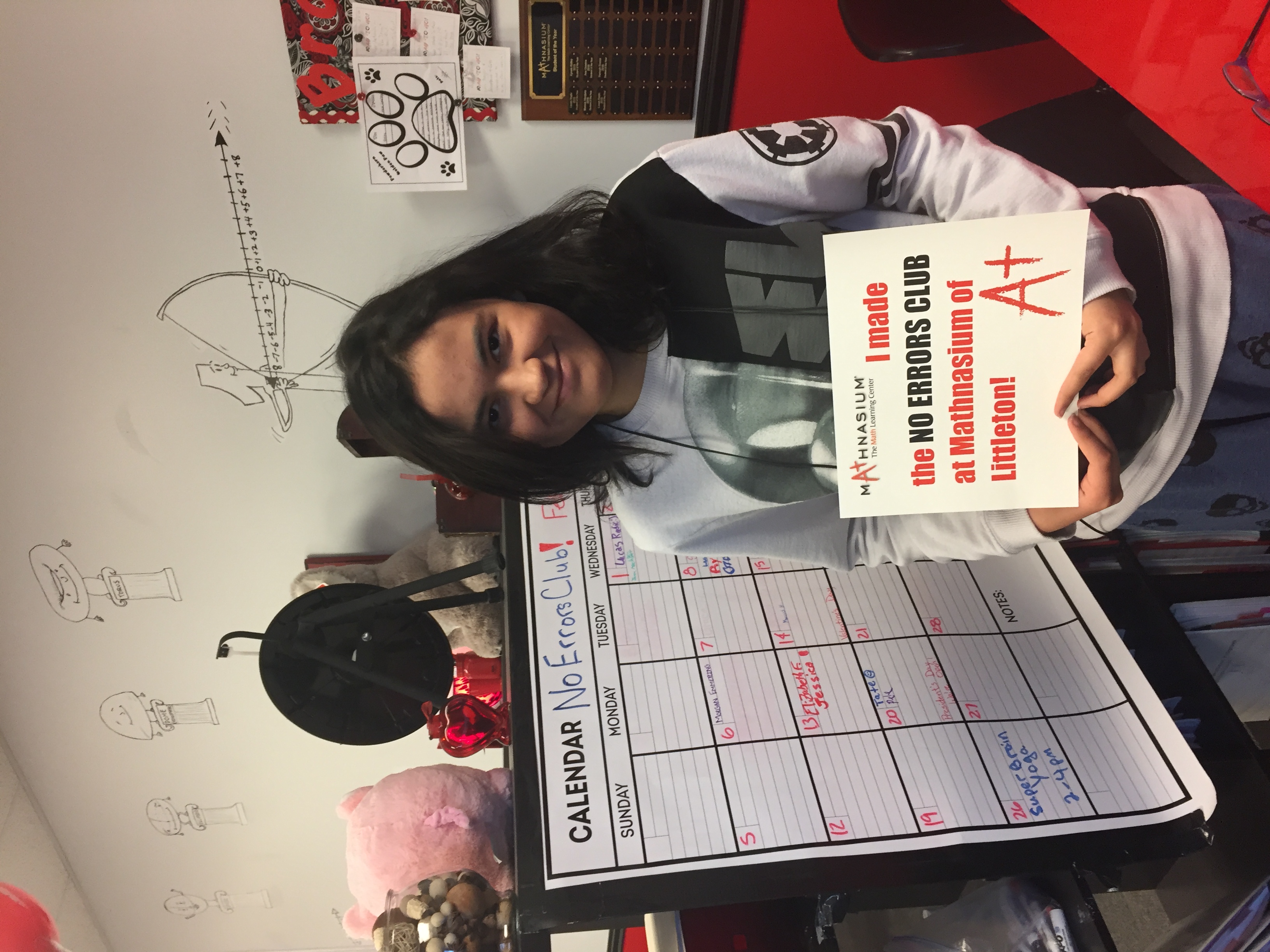Let’s say your child is staring at the following math homework problem, not knowing where to start. To solve the problem, your child needs more than just skills and an understanding of underlying concepts. Your child needs a strategy.
(X+5)(52 +3) – (2+50) = 88 Solve for X * (find answer at the bottom of the article)
When faced with a challenging math problem, a good strategy arms kids with a starting point and the next steps. Having a strategy helps children feel more confident about starting the math problem. Strategies are great for helping parents feelless anxious about assisting with math, too!
With the above problem we might recommend two strategies.
1. Use the mnemonic device PEMDAS to remember the order of operations.
2. Rewrite the equation in its simplest form after every step.
Kids who do math homework at Mathnasium of Littleton learn a lot of strategies to tackle difficult math problems. We don’t stop with strategies, though, we make sure each child understands the math conceptually and has the skills to solve it. Even the best strategy in the world can’t make up for a lack of understanding or skills.
In a previous article we talked about strategies for long term math goals. The strategies must align with the complexity of the problems, the resources available, and the values of the instructional goal. Even short term goals, like solving a tricky algebra problem, fit this model.
How do values fit into the strategies we teach?
The common core state math standards value conceptual understanding more than earlier math standards. The mismatch of the standards from the 70s, 80s, and 90s and the math standards of today account for some of the different math strategies your children are learning at school. At Mathnasium of Littleton, we value foundational skills such as number sense. We teach strategies to aid in conceptual understanding. We also teach strategies like the traditional algorithms you learned in school. To facilitate numerical fluency we teach strategies to make mental math easier. Traditional tutors often focus on a short term goals, like getting through a day's homework assignment. Therefore, they are likely to teach strategies and shortcuts for which the student isn’t ready. These strategies can account for short term grade boosts but can lead to an over-reliance on the tutor.
How does complexity fit into the strategies we teach?
Homework: We don’t control what homework the kids bring to the center. We wish we did! The strategy we recommend for solving the homework problems will depend on the child's level of math mastery. A child who is two years behind in math, or has dyscalculia, will need a strategy that focuses on deep conceptual understanding. In contrast, a child who understands the concepts, but makes arithmetic errors, may need a strategy to slow down and focus on accuracy.
Mathnasium Curriculum: Most kids who struggle with math at school feel like the Mathnasium curriculum is easier than at school. It isn’t actually easier, it’s just more individualized. The pace is customized for every student and our curriculum moves in smaller incremental steps. The children learning concepts and skills from the Mathnasium curriculum are ready for a variety of strategies, including shortcuts.
How do resources fit into the strategies we teach?
At Mathnasium of Littleton we encourage the use of a variety of resources such as manipulatives, paper and pencil, trained instructors, and our proprietary curriculum. Our instructors know when to let a child work out a problem independently and when they need to intervene and show them a different way to do the problem.
We have written about specific strategies we use for several types of math problems before. These strategies include:
Encouraging a third grader to draw a picture with labels or use the word problem strategy known as CUBES.
Encouraging a fourth grader to estimate an answer to see if it is reasonable.
Encouraging a fifth grader to use precise vocabulary and estimate when doing a problem with percentages.
Encouraging a middle school child to use the mnemonic device PEMDAS when solving a polynomial equation.
Encouraging a high school student in Algebra 2 to make graph or break the problem down into smaller steps.
If your child is struggling with math or math homework let us help him or her develop the right strategies. We have the resources and the values to help your child develop great strategies to take the pain out of math and math homework. At Mathnasium of Littleton we work with children to develop math concepts, skills, and strategies. Give us a call today (303)979-9077 and we will set up a free trial session and a free assessment.
*Did you solve for X in the top problem? The answer is X=0



 (303) 979-9077
(303) 979-9077







